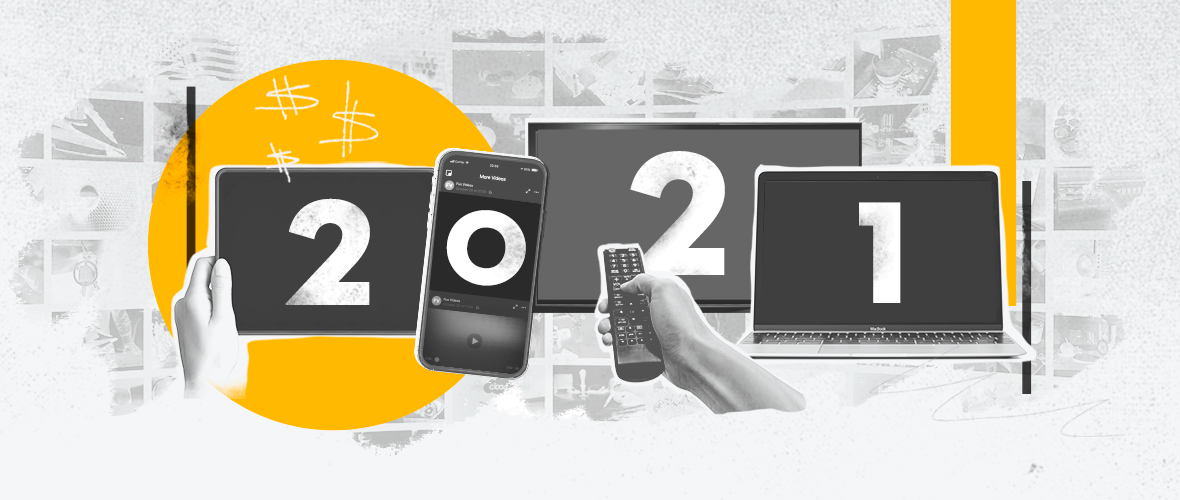The Evolution of Political Ads in 2024
In the ever-evolving environment of politics and media, the role of political advertising is constantly shifting. As the 2024 political landscape unfolds, the battleground for voter attention has expanded into a multi-platform arena, significantly reshaping media buying strategies. From traditional TV and radio to the rapidly growing OTT (Over-The-Top) streaming and digital mediums, political advertisers are navigating a complex arena influenced by technological advancements, social media dynamics, and the omnipresence of AI.
The Traditional Media Contenders: TV, Radio, and Cable
Political advertising is expected to reach record levels in 2024, with estimates suggesting a 30% increase from 2020, totaling $12.32 billion. Traditional media, particularly television -- mainly in hotly contested swing states in news and business programming -- remains dominant capturing up to 72% of this total spend (roughly $7-$9 billion). Historically, TV, radio, and cable networks have been the cornerstone of political advertising. However, the rise of streaming services and digital platforms has fragmented audiences, posing challenges for reaching voters effectively and efficiently. While these traditional mediums still command significant viewership, the cost of advertising has continued to climb, driven by demand during election cycles. The timing of these cycles is crucial to understand. About 50% of political ad dollars are spent in the 30 days leading up to the election, with 25% in the final 10 days. This creates significant pressure on inventory for non-political advertisers, driving up costs, sometimes double, triple normal prices by impacting availability.
Emerging Online Platforms Allow for Better Audience Targeting: OTT Streaming and Digital Mediums
Digital mediums, such as social media, websites, and apps, provide exceptional microtargeting capabilities, enabling campaigns to tailor messages based on demographics, interests, and online behavior. Digital political advertising is projected to increase 156.3% compared to 2020. This growth outpaces the overall political ad spend increase of 28.7%.
OTT streaming platforms have emerged as potent channels for political advertising, offering targeted and measurable campaigns on platforms like Hulu, Netflix and Amazon Prime. With the ability to reach cord-cutters and younger demographics on these popular platforms, political advertisers are allocating a growing portion of their budgets to them. Connected TV (CTV) is also emerging as a major player with 45% of all digital political ad spend, up from 19% in 2020.
Social Media and AI: Catalysts for Change
Social media has revolutionized political advertising, offering unparalleled reach and engagement, especially to younger voters. However, concerns about misinformation and data privacy have led to increased scrutiny and regulation. Despite this, platforms like Facebook, X (formally known as Twitter), and Instagram remain integral to campaign strategies, leveraging AI algorithms to optimize ad placement and targeting. This increased presence has also raised concerns about the spread of misinformation and the ethical use of data in targeting political ads. In response, Meta (Facebook and Instagram), TikTok, and X have all implemented or updated policies to combat false and inaccurate details, protect voter integrity, and regulate political ads. For instance, Meta has reinstated its policy to block new political ads during the final week before the election. Meanwhile, X has lifted its previous ban on cause-based ads, but introduced new civic integrity policies.
AI-driven technologies have become indispensable tools and opportunities for media buying, enabling campaigns to analyze vast amounts of data to optimize ad performance and maximize ROI. Machine learning algorithms can predict audience behavior, identify trends, personalize messaging, and allocate resources efficiently, enhancing the effectiveness of political ads across all mediums. Again, this is not without challenges due to deep fakes continuing to generate misleading material.
FCC Rules and Regulations
The head of the Federal Communications Commission introduced a proposal back in late May that would require political advertisers to disclose when they use AI-generated content in broadcast TV and radio ads.
The proposal would add a layer of transparency that many lawmakers and AI experts have been calling for as rapidly advancing generative AI tools produce lifelike images, videos and audio clips that threaten to mislead voters in the upcoming U.S. election. Currently, the FCC, the nation's top telecommunications regulator, only has authority over TV, radio, and some cable providers. Any new rules would not cover digital and streaming platforms.
The Shift in Media Buying Trends
The scene of political advertising in 2024 is characterized by a diversification of platforms and a reliance on technology advancements to optimize campaign effectiveness. While traditional media outlets remain relevant and influential, the rise of digital platforms and social media have transformed media buying tactics, requiring campaigns to embrace innovation and adapt to new mediums. As we navigate the remainder of the election cycle, the intersection of politics, media, and technology will continue to shape the way candidates engage with voters and allocate their advertising budgets.






